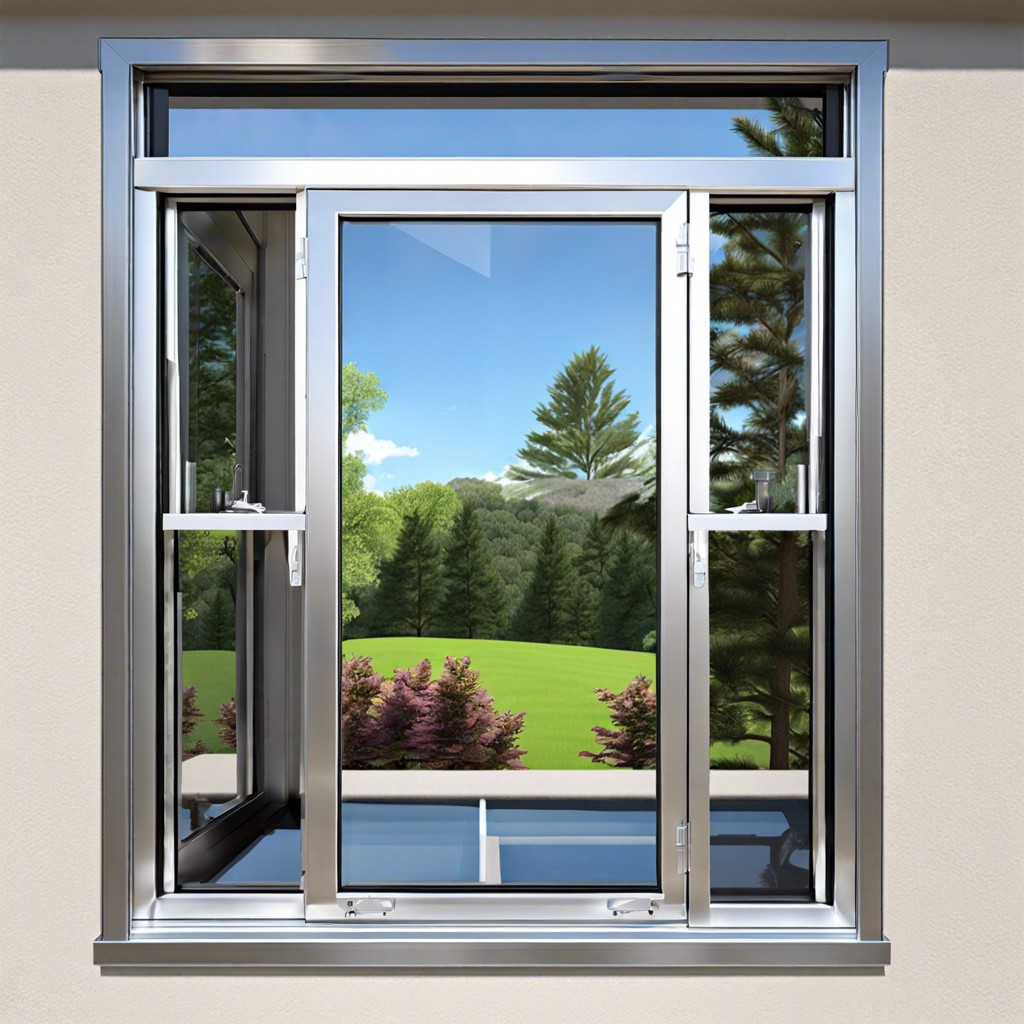Discover the fascinating truth about whether lightning can penetrate windows, and learn how to protect yourself and your home during a storm.
Have you ever wondered if lightning can strike through a window? You’re not alone. Many people are curious about this topic, especially those who live in areas prone to thunderstorms.
As a window expert, I’ve been asked this question countless times and today, I’m here to give you the answer. In this blog post, we’ll explore whether or not lightning can strike through a window and what you can do to stay safe during a thunderstorm.
So sit back, relax and let’s dive into the world of lightning and windows!
Key takeaways:
- Lightning can strike through windows, but the chances are low.
- The most common type of lightning strike is cloud-to-ground, which can strike through windows if they’re not properly protected.
- Glass is generally considered a poor conductor of electricity, but some types of glass may have higher conductivity than others.
- Lightning-resistant windows made of tempered or laminated glass can reduce the risk of damage or injury.
- Indirect lightning strikes can still occur and may damage electronics and appliances, so it’s important to unplug them during storms.
Lightning Formation

Lightning is a natural phenomenon that occurs when there is an electrical discharge between the atmosphere and the ground. Thunderstorms are usually responsible for lightning formation, as they create an environment where positive and negative charges can build up in different parts of the atmosphere.
When these charges become strong enough, they will try to balance themselves out by creating a flow of electricity through the air.
This flow of electricity creates what we know as lightning strikes. Lightning bolts can be incredibly powerful, with temperatures reaching up to 30,000 degrees Celsius (54,000 degrees Fahrenheit).
They also produce thunder which results from rapidly expanding heated air around it.
While lightning strikes may seem random or unpredictable at times; scientists have been able to identify certain patterns in their formation over time. Understanding how this process works can help us better prepare for storms and protect ourselves from potential harm during thunderstorms.
Types of Lightning Strikes
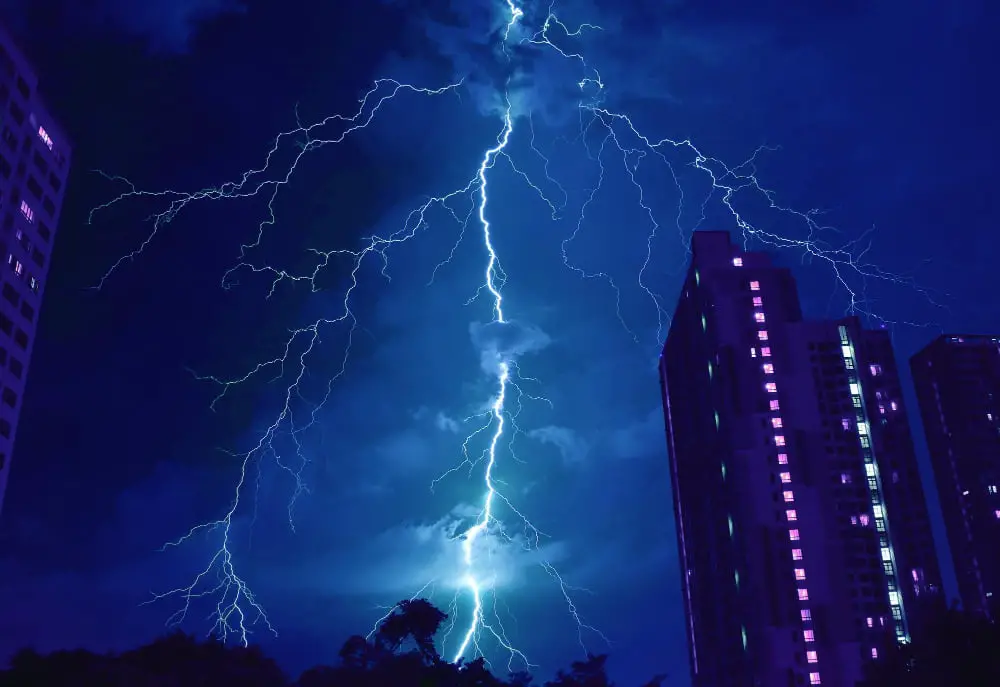
The most common type is cloud-to-ground (CG) lightning, which occurs when negatively charged electrons from the bottom of a storm cloud are attracted to positively charged objects on the ground. CG lightning can strike through windows if they’re not properly protected.
Another type is intra-cloud (IC) lightning, which happens within a single thundercloud and doesn’t pose as much danger as CG lighting. However, IC lighting can still cause power surges that may damage electronic devices connected to unprotected outlets.
The third kind is called “ribbon” or “staccato” discharge – this rare form of discharge consists of multiple strokes separated by fractions of seconds creating an almost continuous flickering effect resembling ribbons or staccato notes.
It’s also important to note that while direct hits are more dangerous than indirect ones because they carry higher voltage levels; indirect hits caused by nearby strikes could be equally harmful due to their ability to travel through conductive materials like metal pipes and electrical wiring systems.
The Science Behind Lightning
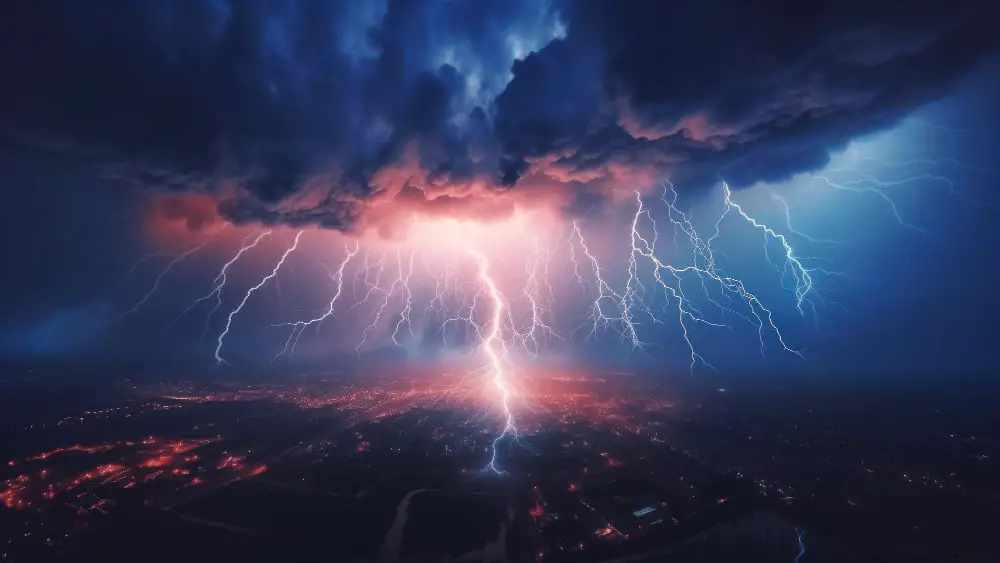
This can happen within a cloud, between clouds or between the ground and a cloud. When this happens, lightning strikes occur as electricity seeks to balance itself out.
The science behind lightning involves understanding how these electrical charges build up and discharge. Thunderstorms are formed by warm air rising from the earth’s surface into cooler regions of the atmosphere where it condenses into water droplets forming clouds.
As these droplets collide with each other, they create static electricity which builds up until it discharges as lightning.
There are different types of lightning strikes such as intra-cloud (within one cloud), inter-cloud (between two different clouds) and ground-to-cloud (between the ground and a cloud). Each type has its unique characteristics but all follow similar principles based on electric charge imbalances.
Understanding how thunderstorms form helps us understand why windows may be vulnerable during storms since glass is not an excellent conductor of electricity compared to metals like copper or aluminum which can dissipate electric current more efficiently.
Effects of Lightning On Buildings
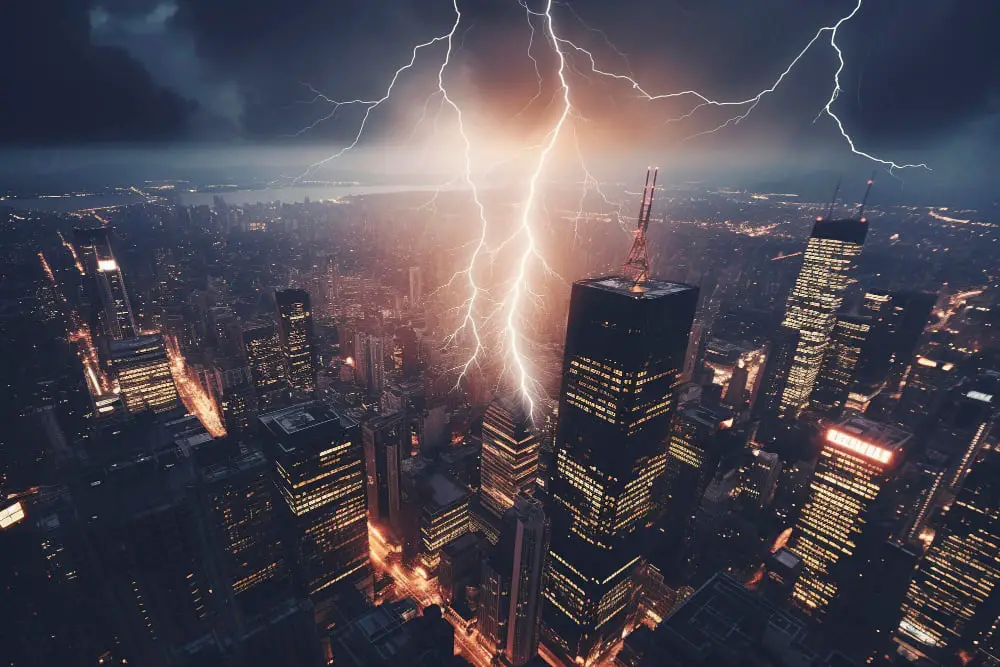
The effects of lightning on buildings depend on various factors such as the intensity and duration of the strike, the type of materials used in construction, and whether or not there are any protective measures in place.
One common effect is that lightning can start fires. When a bolt hits a structure’s roof or walls, it may ignite flammable materials like wood or insulation.
This fire risk is why many homes have lightning rods installed to divert electrical charges away from vulnerable areas.
Another potential consequence is structural damage caused by shock waves generated by thunderclaps during close-range strikes. These shockwaves can crack walls and foundations leading to costly repairs.
Windows are particularly susceptible to breaking when struck directly by lighting due to their fragility compared with other parts of buildings’ structures; however indirect strikes could also break windows through pressure changes resulting from nearby direct hits.
Properties of Glass Windows

They allow natural light to enter the space, provide ventilation, and offer an unobstructed view of the outside world. However, when it comes to lightning strikes during thunderstorms, glass windows can pose a significant risk.
The properties of glass play a crucial role in determining its ability to withstand lightning strikes. Glass is an insulator that does not conduct electricity well; however, it can still be affected by electrical charges from nearby lightning bolts.
When struck by lightning directly or indirectly through conducting materials such as metal frames or screens attached to them – glass windows may shatter due to thermal shock caused by high temperatures generated during the strike. The shattered pieces could cause injuries or damage property if they fall on people or objects below.
Conductivity of Materials
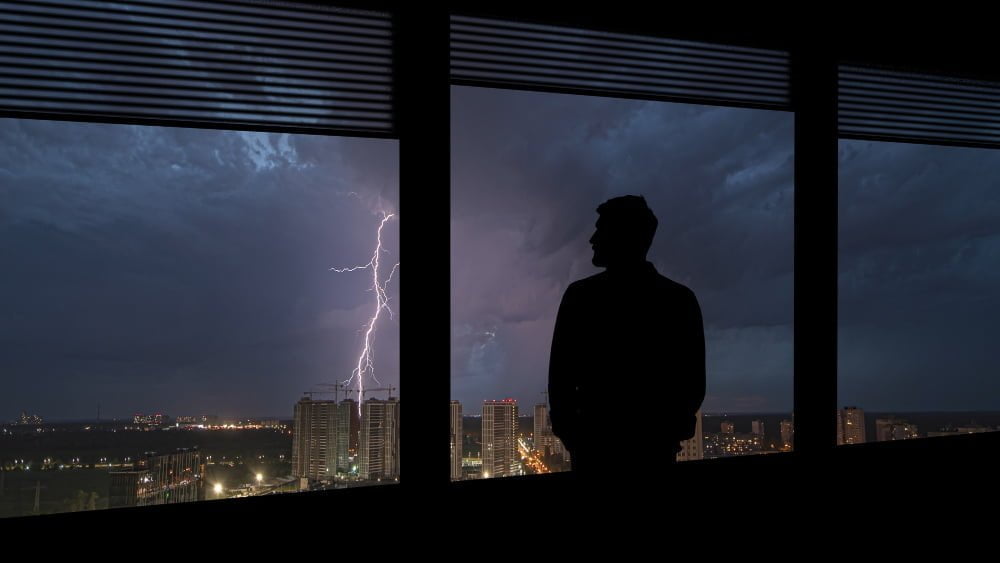
Conductivity refers to how easily electricity can flow through a material. Metals are highly conductive, which means that they allow electricity to pass through them with ease.
On the other hand, non-conductive materials like rubber and plastic do not allow electricity to flow through them.
So what does this mean for windows? Glass is generally considered a poor conductor of electricity because it’s an insulator – meaning that it doesn’t conduct electrical current very well. However, some types of glass may have higher conductivity than others due to their composition or coatings.
It’s important for homeowners and building managers alike to understand the properties of different window materials when considering protection against lightning strikes during thunderstorms. While no material can guarantee complete safety from lightning damage, choosing windows made from low-conductivity glass could potentially reduce risks associated with indoor strikes caused by direct hits on buildings.
Lightning and Glass Windows
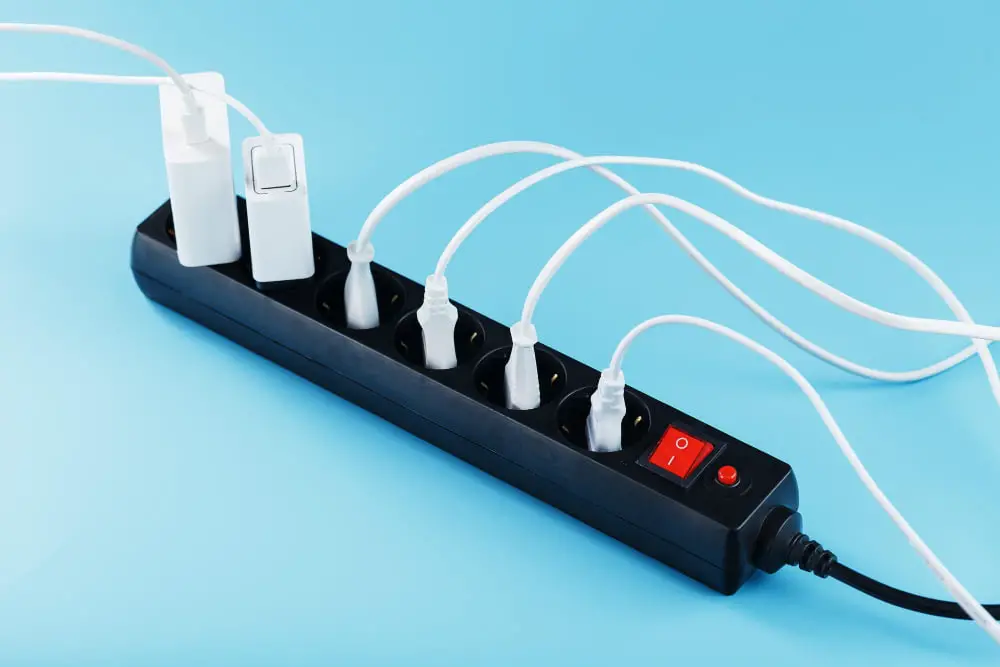
The truth is that glass is an insulator, which means it doesn’t conduct electricity well. However, this doesn’t mean that you’re completely safe from lightning when you’re indoors.
When lightning strikes a building, the electrical charge can travel through the metal frames of windows and doors or even jump through small gaps around them to reach inside. This phenomenon is known as arcing or flashover.
The risk of arcing depends on several factors such as the size of the window panes and their distance from each other; whether there’s metal framing around them; how close your home is to tall trees or power lines outside; among others.
While it’s rare for direct indoor strikes to occur via glass windows during thunderstorms due to their low conductivity properties compared with metals like copper (which conducts electricity very well), indirect hits are still possible.
So what can you do? One option would be installing surge protectors on all electronic devices in your home since these will help prevent damage caused by power surges resulting from nearby lighting activity. Another option would be closing all doors and windows during storms so that no air gap exists between surfaces where electric arcs could form.
Factors Influencing Indoor Strikes
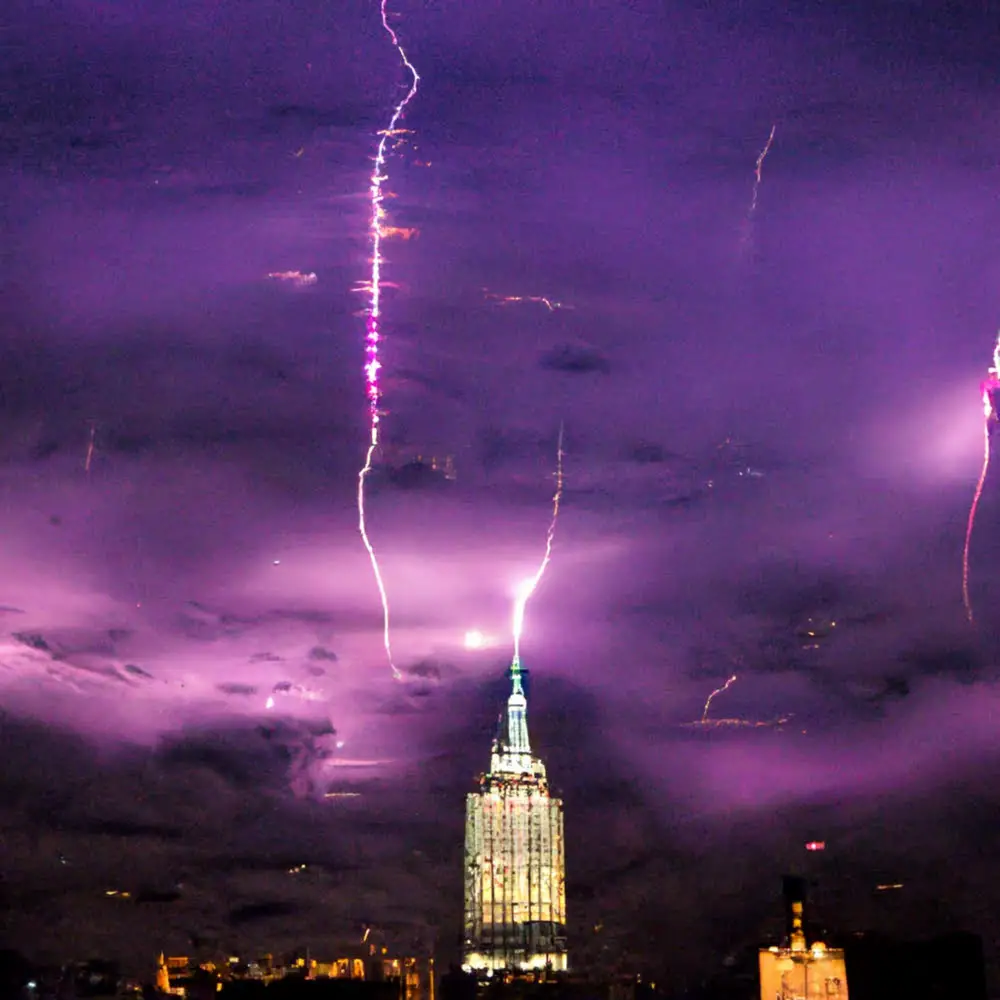
However, indoor lightning strikes can also occur and pose a significant risk to those inside the building. But what factors influence whether or not an indoor strike will happen?
One of the most important factors is the proximity of conductive materials such as metal pipes or wiring within walls. These materials can act as pathways for electrical currents from outside during a storm, increasing the likelihood of an indoor strike.
Another factor is how well-grounded your home’s electrical system is. A properly grounded system helps dissipate any excess electricity safely into the ground rather than through your home’s wiring and appliances.
The height and location of your home also play a role in determining its susceptibility to lightning strikes. Homes located on hills or high-rise buildings are more likely targets because they protrude above surrounding structures.
Types of Windows: Do Some Offer More Protection?

Some types of windows offer more protection than others. For example, double-paned or laminated glass can provide an extra layer of insulation against electrical currents and reduce the risk of injury or damage during a storm.
However, it’s important to note that no window is completely immune to lightning strikes. Even if your window has protective features like metal frames or coatings designed to dissipate electrical charges, there’s still a chance that lightning could strike through the glass itself.
That being said, choosing the right type of window for your home can make a difference in terms of safety and protection during thunderstorms. It’s worth considering options like impact-resistant glass or tempered glass which are designed with durability in mind.
Understanding Faraday Cages
One of the most effective ways to shield yourself from lightning is by using a Faraday cage. A Faraday cage is an enclosure made of conductive materials that block electromagnetic fields, including those generated by lightning strikes.
Faraday cages work on the principle that electric charges will distribute themselves evenly across any conductive surface. When struck by lightning, the charge flows around the outside of the cage and does not penetrate inside where people or electronics may be located.
In practical terms, this means that if you’re indoors during a storm with electronic devices such as laptops or smartphones plugged in for charging purposes – they should be placed inside metal containers like microwave ovens (not turned on) or even your car (with windows closed). These objects act as makeshift Faraday cages because their metallic surfaces prevent electrical currents from entering them.
It’s important to note that while some buildings are designed with built-in Faraday cages – such as hospitals and data centers – most homes do not have this feature. However, there are steps homeowners can take during construction or renovation projects to incorporate these protective measures into their homes’ design plans.
Indirect Lightning Strikes
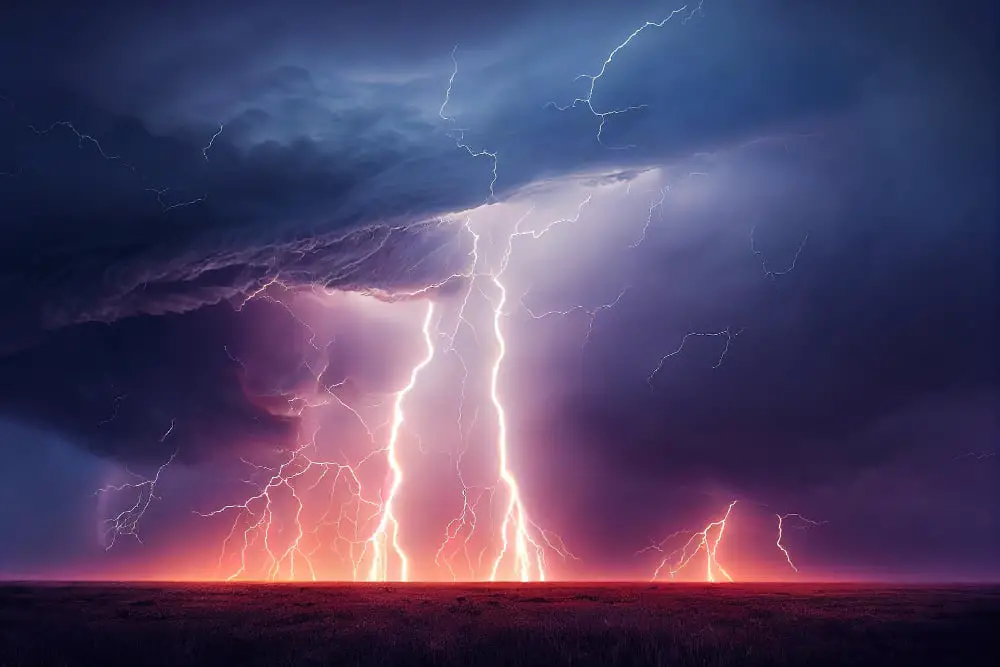
Even if your home is equipped with lightning rods or surge protectors, there’s still a chance that an indirect strike could occur. An indirect lightning strike happens when the electrical current from a nearby direct hit travels through power lines or other conductive materials and enters your home through the wiring system.
Indirect strikes are less common than direct ones but they can still cause significant damage to electronics and appliances in your home. The best way to protect yourself against an indirect hit is by unplugging all electronic devices during a storm and avoiding using them until it has passed.
It’s also important to note that even if you’re not directly struck by lightning, you may experience power surges which can damage sensitive equipment like computers or televisions. Surge protectors are designed to prevent this type of damage but it’s always better safe than sorry – unplug everything just in case!
While we cannot control where lighting will strike during storms; we have some measures at our disposal for protection against its effects on our homes’ electrical systems and appliances.
Prevention Measures During Storms

Prevention measures can help reduce the risk of injury or damage caused by lightning. One of the most effective ways to stay safe during a storm is by staying indoors and avoiding contact with electrical appliances or plumbing fixtures.
If you’re inside when a storm hits, make sure all windows are closed tightly and avoid using corded phones or electronic devices that are plugged into outlets. If possible, unplug any non-essential electronics before the storm arrives.
It’s also important to avoid taking showers or baths during an electrical storm as water conducts electricity which increases your chances of getting electrocuted if there is a direct strike on your house.
Another prevention measure worth considering is installing surge protectors in your home as they can help prevent power surges that may occur due to indirect strikes nearby.
By following these simple prevention measures during storms, you can significantly reduce the risk of being struck by lightning while indoors.
Safety Tips for Storm Protection
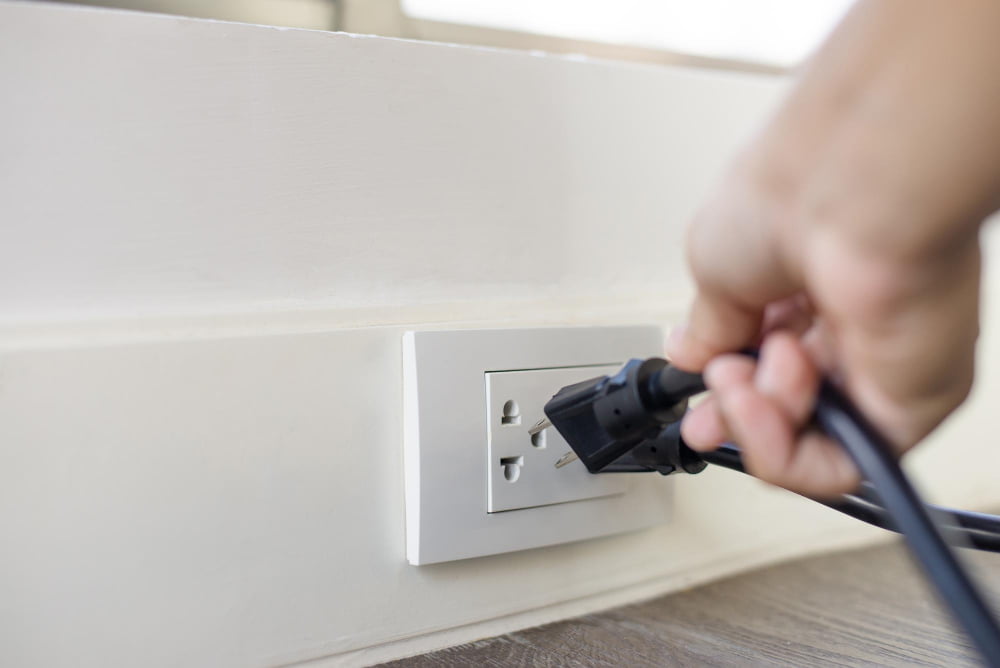
Here are some safety tips for storm protection:.
1. Stay indoors: Avoid going outside during a thunderstorm unless absolutely necessary.
2. Unplug electronics: Lightning can travel through electrical wires, so unplug any non-essential electronics during the storm.
3. Seek shelter in an interior room: If you’re inside when the storm hits, move away from windows and doors and seek shelter in an interior room or basement if possible.
4. Don’t touch plumbing fixtures or appliances: Metal pipes and appliances can conduct electricity, so avoid touching them during a thunderstorm.
5. Avoid using corded phones or electronic devices with cords connected to outlets: Cordless phones are safe to use but avoid using corded ones as they pose risks of electrocution due to lightning strikes on phone lines.
How to Stay Safe From Lightning When Indoors

But what if lightning strikes your home? How can you protect yourself from harm when you’re inside? Here are some tips on how to stay safe from lightning when indoors:.
1. Stay away from windows: Lightning can strike through windows, so it’s best to avoid them during a storm.
2. Unplug electronic devices: Electrical appliances and devices that are plugged in can conduct electricity if struck by lightning, which could cause injury or damage.
3. Avoid water sources: Water is an excellent conductor of electricity, so don’t take showers or baths during a thunderstorm.
4. Use surge protectors: Surge protectors help prevent power surges caused by lightning strikes that could damage electronics and start fires.
5. Seek shelter in the middle of your home: If possible, go to the center of your house where there aren’t any windows or doors leading outside.
Myths About Lightning Strikes

One of the most common myths is that lightning never strikes the same place twice. This couldn’t be further from the truth! In fact, some buildings are struck by lightning multiple times in a single storm.
Another myth is that you’re safe from lightning if you’re indoors. While it’s true that being inside offers more protection than being outside during a thunderstorm, it’s not foolproof.
Lightning can still strike through windows or enter your home through electrical wiring or plumbing.
A third myth is that rubber-soled shoes protect you from getting struck by lightning while outdoors during a storm. Unfortunately, this isn’t true either – rubber soles won’t prevent an electrical current from passing through your body if you happen to be in contact with something conductive like metal.
It’s important to separate fact from fiction when it comes to protecting yourself and your home during thunderstorms.
Lightning Rods and Homes
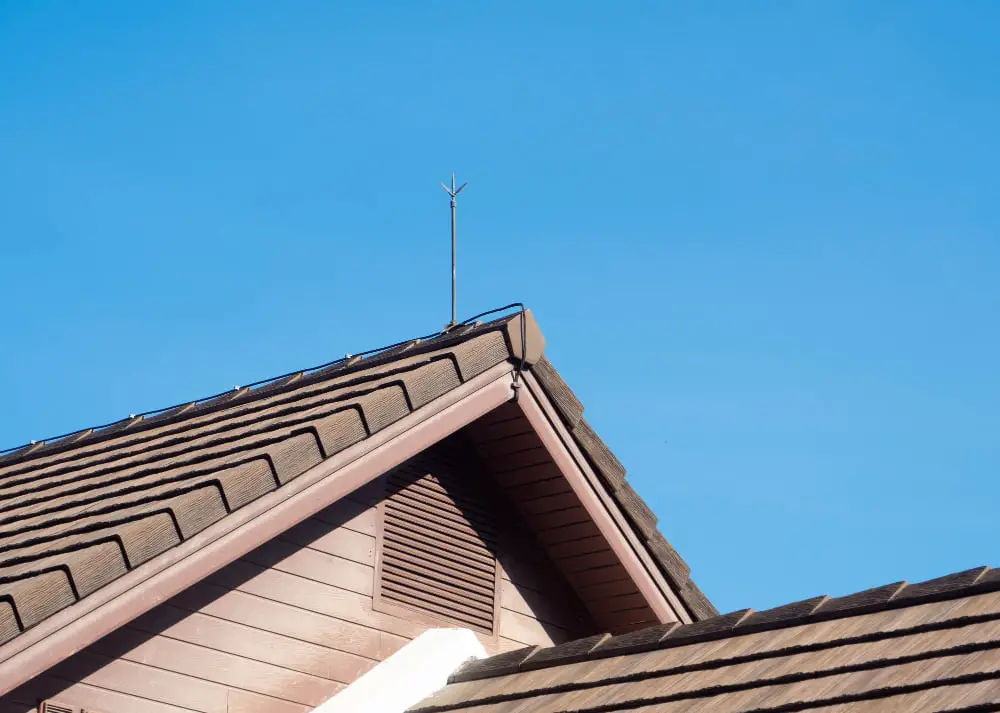
They work by providing a path of least resistance for lightning to follow, diverting the electrical charge away from the structure and into the ground. While they don’t prevent lightning strikes altogether, they can significantly reduce damage caused by direct hits.
If you live in an area prone to thunderstorms or have experienced lightning strikes in your neighborhood before, it may be worth considering installing a lightning rod on your home. A professional electrician can assess your property’s needs and recommend appropriate measures.
It’s important to note that while having a lightning rod installed is beneficial, it doesn’t guarantee complete protection against all types of indirect strikes or post-strike consequences such as power surges that could damage electronic devices inside homes.
In addition to installing lighting rods, there are other precautions homeowners should take during storms such as unplugging electronics and avoiding contact with water sources like sinks or showers which could conduct electricity if struck indirectly through pipes connected outside of their house walls.
Precautions to Take During a Thunderstorm

One of the most important things you can do is stay indoors and avoid using electrical appliances or plumbing fixtures until the storm has passed. Lightning can travel through these conductive materials, putting you at risk of electrocution.
If you’re inside during a thunderstorm, it’s also recommended that you stay away from windows and doors as much as possible. While lightning striking through windows is rare, it’s still possible for glass to shatter due to the force of nearby strikes.
Another precautionary measure that homeowners should consider taking is installing surge protectors in their homes. These devices help prevent damage caused by power surges resulting from lightning strikes hitting power lines or other electrical equipment near your home.
If there are any outdoor items such as patio furniture or gardening tools lying around outside your house during a storm warning period; bring them inside immediately! These objects could become dangerous projectiles if picked up by strong winds associated with storms – causing injury or property damage in their path.
Lightning-Resistant Windows: An Option to Consider
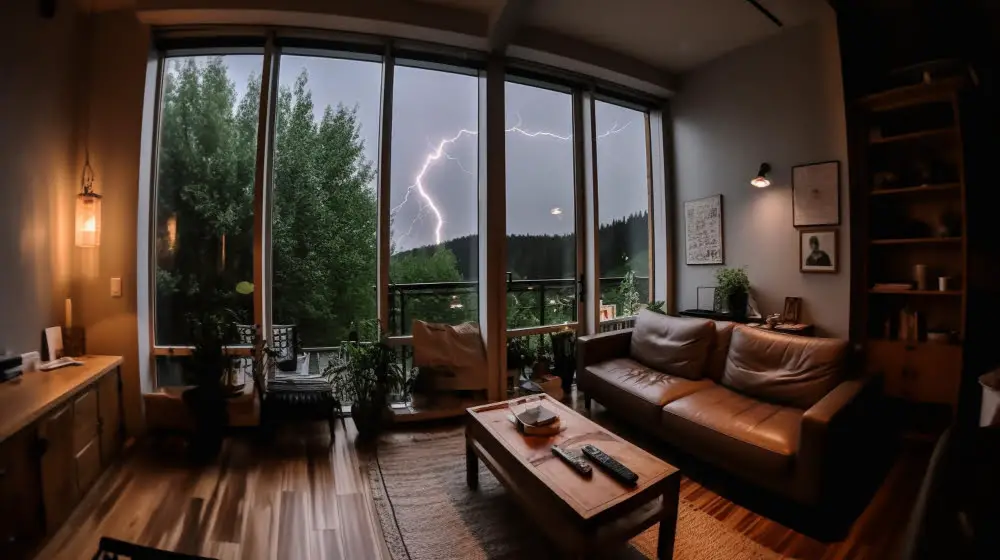
One option worth considering is installing lightning-resistant windows. These specially designed windows are made with materials that can withstand the impact of a lightning strike, reducing the risk of damage or injury.
Lightning-resistant windows are typically made with tempered glass or laminated glass, which is reinforced with a layer of plastic between two sheets of glass. This construction makes them more durable than standard window panes and less likely to shatter upon impact.
While no window can guarantee complete protection against lightning strikes, investing in these types of windows may provide added peace-of-mind during storm season. It’s also important to note that proper installation by a professional is crucial for ensuring maximum effectiveness.
In addition to installing lightning-resistant windows, there are other measures you can take such as using surge protectors for electronic devices and unplugging appliances during storms.
Post-Strike Consequences

If your home has been struck by lightning, you may experience power outages or electrical surges that can damage appliances and electronics. In some cases, fires can also occur due to the heat generated by the strike.
If you suspect that your home has been hit by lightning, it’s essential to call emergency services immediately. They will be able to assess any potential risks and provide guidance on how best to proceed.
It’s also crucial for homeowners with damaged windows after a storm not only replace them but ensure they are installed correctly as well. A poorly installed window could lead to further problems down the line such as water leaks or drafts which could compromise energy efficiency in addition safety during future storms.
While being struck directly through a window is rare; indirect strikes are still possible causing significant damages if proper precautions aren’t taken before and after thunderstorms occur.
Emergency Procedures After Strikes
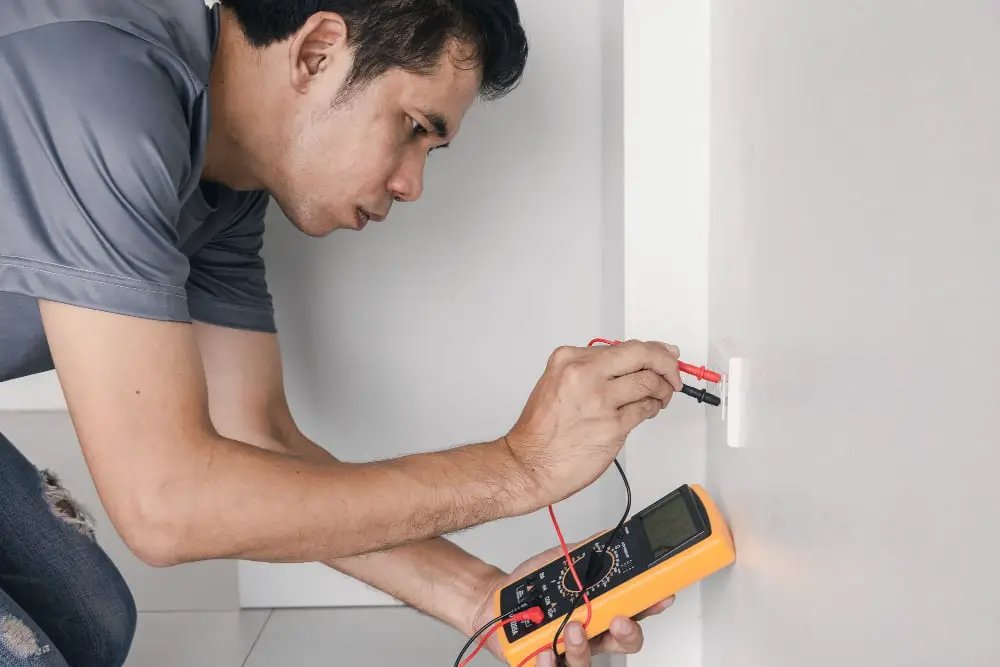
The first step is to ensure that everyone in the house is safe and accounted for. If anyone has been injured, call emergency services right away.
Next, check your home for any signs of damage or fire. Lightning can cause electrical surges that may damage appliances and electronics or start a fire.
If you smell smoke or see flames, evacuate the building immediately and call 911.
It’s also a good idea to have an electrician inspect your wiring after a lightning strike as there could be hidden damages that are not visible on the surface.
If you have experienced property damage due to lightning strikes through windows or other areas of your home during thunderstorms contact professionals who specialize in repairing such damages as soon as possible before they worsen over time leading into more significant problems later on down the line. Remember: safety should always come first when dealing with emergencies caused by natural disasters like thunderstorms!
FAQ
Can lightning come through a window without breaking it?
Lightning cannot come through a window without breaking it, as the window would shatter from the heat and speed, and glass is not a conductor, requiring two strikes for a person to be struck by lightning through the window.
Can lightning strike you inside home?
Yes, lightning can strike you inside your home, as about one-third of lightning-strike injuries occur indoors.
Can lightning strike through a window with blinds?
Yes, lightning can strike through a window with blinds, as they do not provide any resistance, and an open window raises the likelihood of lightning entering.
What precautions should be taken to avoid lightning strikes near windows in a home?
To avoid lightning strikes near windows in a home, one should keep windows closed, avoid standing near windows, and consider installing storm shutters or surge protectors.
How does the type of window material (glass, acrylic, etc.) affect the possibility of a lightning strike?
The type of window material, such as glass or acrylic, influences the likelihood of a lightning strike, as materials with higher electrical conductivity are more prone to attracting lightning.
Are there any specific window designs or features that can reduce the risk of lightning entering through a window?
Installing lightning conductors or grounding systems nearby windows can reduce the risk of lightning entering through a window.
Recap




